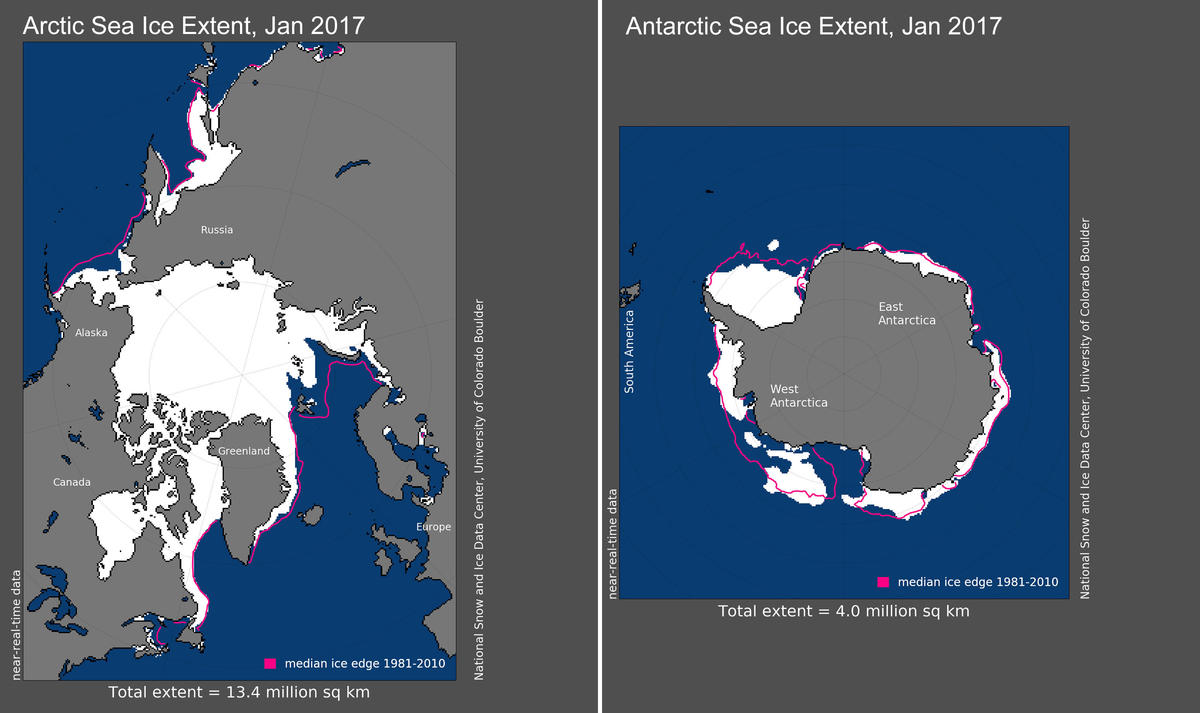January was third warmest on record for the globe. Record low January Arctic and Antarctic sea ice extents.

The globally averaged temperature over land and ocean surfaces for January 2017 was the third highest for the month of January in the NOAA global temperature dataset record, which dates back to 1880.
This summary from NOAA's National Centers for Environmental Information is part of the suite of climate services NOAA provides to government, business, academia and the public to support informed decision-making.
For extended analysis of global temperature and precipitation patterns, as well as extreme events, please see our full report.
Temperature
-
The January temperature across global land and ocean surfaces was 1.58°F above the 20th century average of 53.6°F. This was the third highest for January in the 1880–2017 record, behind 2016 (highest) and 2007 (second highest).
-
The January globally averaged land surface temperature was 2.77°F above the 20th century average of 37.0°F. This value was also the third highest January land global temperature in the 1880–2017 record, behind 2007 (highest) and 2016 (second highest).
-
The January globally averaged sea surface temperature was 1.17°F above the 20th century monthly average of 60.5°F—the second highest global ocean temperature for January in the 1880–2017 record behind 2016.
Snow Cover and Sea Ice
-
According to data from NOAA analyzed by the Rutgers Global Snow Lab, the Northern Hemisphere snow cover extent during January was 890,000 square miles above the 1981–2010 average. This was the sixth largest January Northern Hemisphere snow cover extent in the 51-year period of record. The North American snow cover extent was the 13th largest on record, while the Eurasian snow cover extent was the seventh largest.
-
The average Arctic sea ice extent for January was 487,000 square miles (8.6 percent) below the 1981–2010 average. This was the smallest January extent since records began in 1979 and 100,000 square miles smaller than the previous record set in 2016, according to an analysis by the National Snow and Ice Data Center based on data from NOAA and NASA.
-
The Antarctic sea ice extent for January was 432,000 square miles (22.8 percent) below the 1981-2010 average. This was the smallest January Antarctic sea ice extent since records began in 1979 and 110,000 square miles smaller than the previous record set in 2006.






